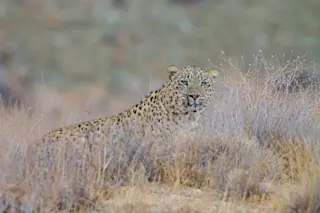Hana Raza has never seen a Persian leopard. But thanks to her, we know the big cats still roam the Zagros Mountains of Kurdistan. After four decades of war in Iraq, the species was thought to have followed the Asiatic lion and cheetah into local extinction. But Raza says she never lost hope. “It’s a very adaptive creature,” she says. “And I just thought, it’s too strong. It can survive the wars.” With a freshly minted bachelor’s degree in biology, she joined local nonprofit Nature Iraq, expanded the organization’s focus to include mammals, wrote a grant proposal for camera traps, and set them out.
Four months later, in 2011—snap! A camera on Jazhna Mountain in the Qara Dagh district captured an image of a powerful male leopard, its rear haunch in the foreground, passing through. Raza’s colleague Korsh Ararat, a passionate birder, was in the U.K. working on his master’s ...














